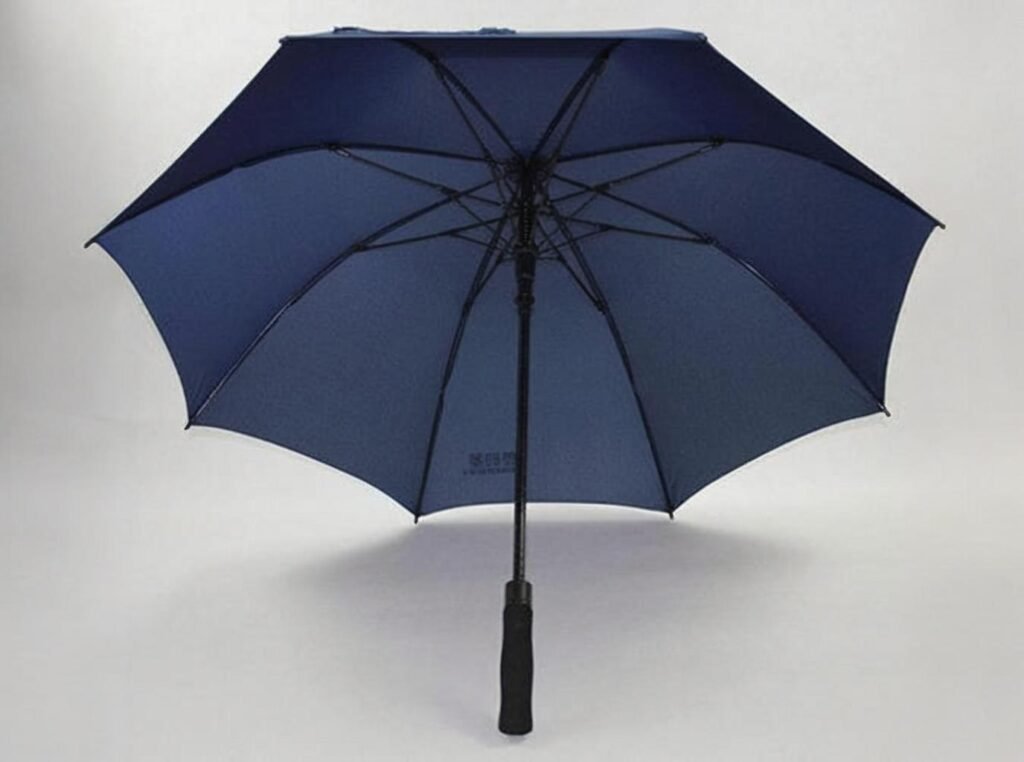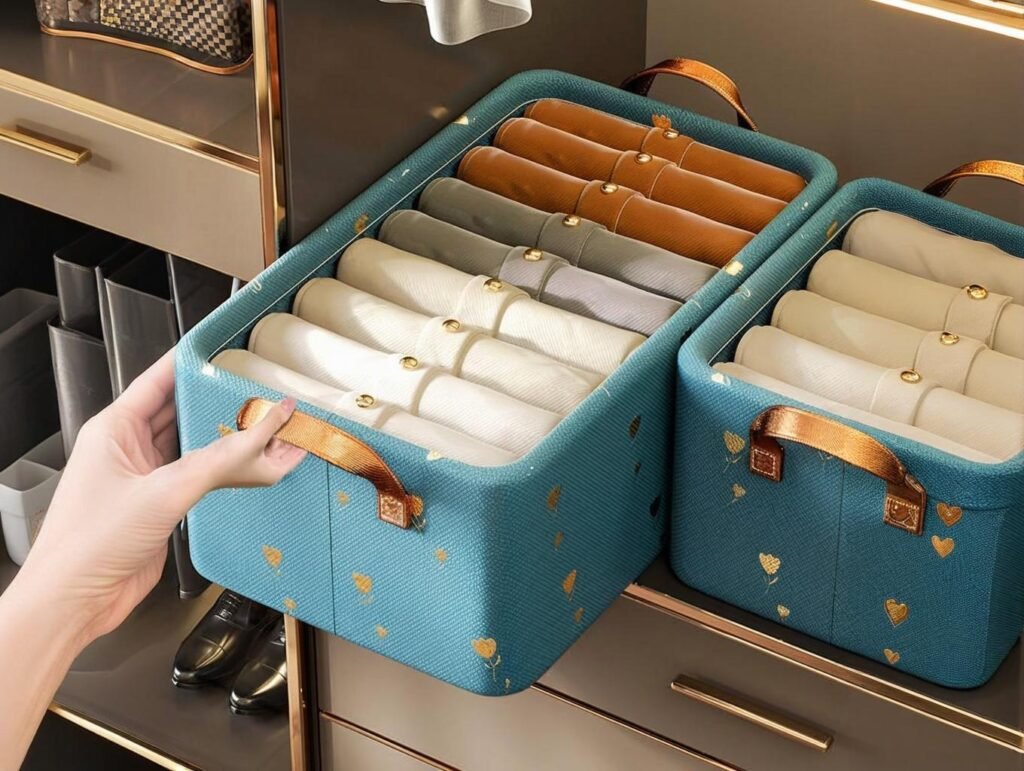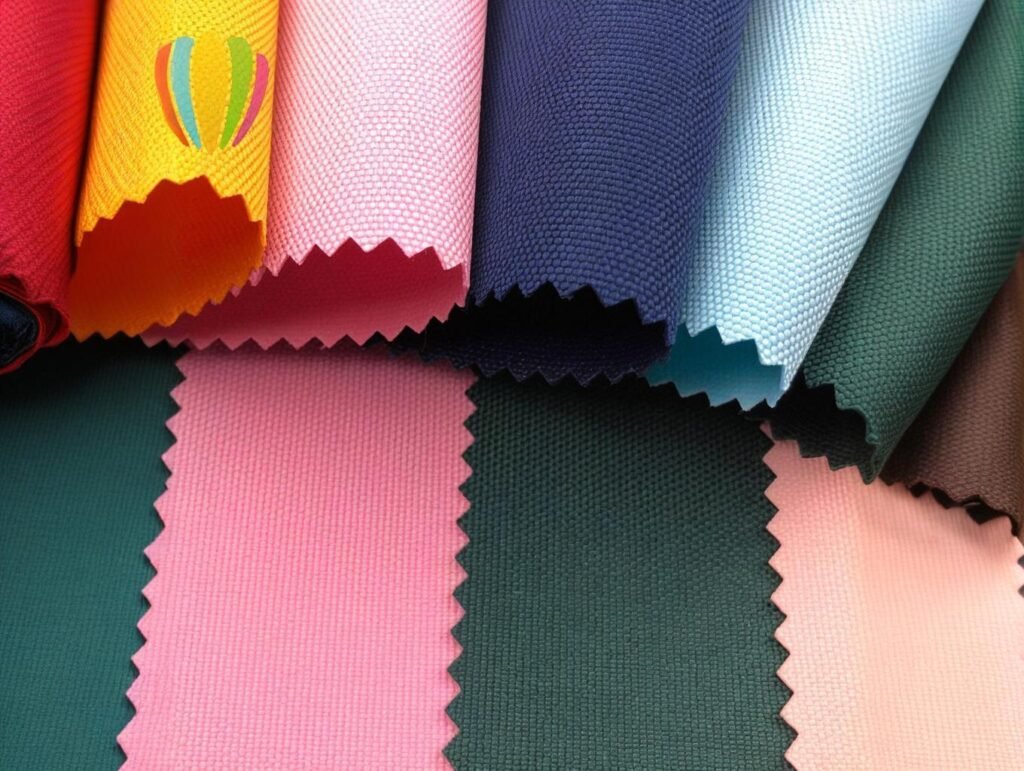
Oxford fabric, once known simply as a reliable workhorse for school bags and casual shirts, is undergoing a dramatic evolution. From recycled yarns and flame-retardant coatings to smart textiles embedded with sensors, this traditionally rugged fabric is now riding the wave of textile innovation. As B2B buyers demand high-performance, customizable, and sustainable solutions, Oxford fabric is stepping up to meet the challenge—and redefining its role in the global textile market.
Oxford fabric innovations are transforming traditional textile manufacturing through eco-friendly coatings, smart technologies, and flexible, on-demand production methods tailored for B2B buyers.
Whether you’re sourcing for military-grade gear, weatherproof tents, or fashion-forward totes, understanding these cutting-edge developments is crucial for competitive product development. This article breaks down the key technological, functional, and market-driven shifts in Oxford fabric production—giving you the tools to make smarter sourcing decisions.
Let’s begin with the most visible transformation: coating technologies that are revolutionizing what Oxford fabric can do.
What Are the Latest Innovations in Oxford Fabric Coating Technologies?
The world of Oxford fabric has evolved far beyond simple PU and PVC coatings. Today, innovations in coating technology—like TPU, silicone-based films, and nanotechnology—are creating fabrics that are more durable, eco-friendly, and multi-functional than ever before.
The latest innovations in Oxford fabric coatings include thermoplastic polyurethane (TPU), solvent-free PU, silicone laminates, and nano-coatings that enhance waterproofing, breathability, and environmental compliance for high-performance applications.
Coating Technologies That Are Redefining Oxford Fabric
1. TPU (Thermoplastic Polyurethane) Coating
- Advantages: Recyclable, flexible at low temperatures, high abrasion resistance
- Application: Sports bags, medical kits, outdoor gear
- Cost: \$1.80–\$2.50/meter (higher than PU, but increasingly popular)
A German outdoor sportswear brand switched from PVC to TPU-coated Oxford for their hiking bag range in 2024, citing improved cold resistance (-30°C) and EU REACH compliance.
2. Solvent-Free PU Coating
- Advantages: VOC-free, eco-friendly, smoother finish
- Application: Baby products, fashion bags, corporate gifts
- Trend: Rising adoption in EU markets due to environmental regulations
3. Silicone-Based Coating
- Advantages: Extremely high heat resistance, anti-slip, UV stable
- Application: Automotive interiors, industrial aprons, tool bags
- Challenge: Limited availability and high cost
| Coating Type | Waterproof (mm) | Breathability | Eco Rating | Price (USD/meter) |
|---|---|---|---|---|
| PU (standard) | 1,000–3,000 | Medium | Low | \$0.80–\$1.20 |
| PVC | 3,000–10,000 | Low | Very Low | \$1.00–\$1.50 |
| TPU | 5,000+ | High | High | \$1.80–\$2.50 |
| Solvent-Free PU | 2,000–4,000 | Medium | High | \$1.60–\$2.10 |
| Silicone Coated | 6,000+ | Medium | Moderate | \$2.20–\$3.00 |
4. Nano Coatings (Hydrophobic + Anti-Stain)
- Creates self-cleaning effects by repelling dust, oil, and water
- Often paired with low-denier Oxford for fashion and lifestyle products
- Still underutilized in heavy-duty industrial applications—but growing
How Is Smart Technology Being Integrated into Oxford Fabric Production?

Smart technology is making its way into Oxford fabric production through RFID integration, antimicrobial agents, and even conductive threads—bringing added value to products in healthcare, defense, logistics, and consumer electronics sectors.
Smart technology is integrated into Oxford fabric through embedded RFID tags, conductive yarns, and antimicrobial finishes that add functionality, traceability, and hygiene features to traditional textile applications.
Smart Applications in Oxford Fabric
1. RFID-Enabled Oxford Fabric
- Used in logistics bags, military kits, and warehouse covers
- Enables traceability, inventory tracking, and supply chain automation
- Common in 600D and 1000D Oxford with PVC or TPU coating
A U.S. logistics firm uses RFID-tagged 1000D Oxford warehouse bin covers to automate their inventory audits, reducing manual checks by 85%.
2. Conductive Threads & Power Integration
- Oxford fabric can be woven or laminated with conductive textiles
- Powers heating pads, GPS gear, or wearable electronics
- Early-stage adoption in automotive and medical textile industries
3. Antibacterial & Antiviral Finishes
- Silver ion or zinc-based antimicrobial coatings are applied to Oxford fabrics used in:
- Medical storage bags
- Gym equipment covers
- School backpacks
| Smart Feature | Application Area | Cost Impact | Adoption Level |
|---|---|---|---|
| RFID Labeling | Logistics, military | +5–10%/unit | Medium–High |
| Conductive Threads | Wearables, electronics | +20–30% | Low–Emerging |
| Antimicrobial Finish | Healthcare, sports gear | +10–15% | High |
4. UV Sensor-Responsive Finishes
- Color-changing Oxford fabric used for UV exposure alerts in beach bags and children’s backpacks
- A niche trend but highly engaging for promotional product designers
Forward-looking brands are blending Oxford’s durability with “smart aesthetics” for wearable tech and weather-reactive apparel.
Which Sustainable Practices Are Emerging in Oxford Fabric Manufacturing?
As global regulations tighten and consumer demand for eco-conscious products increases, manufacturers are pushing the limits of sustainable textile innovation—even in rugged, synthetic materials like Oxford fabric. Today’s greener Oxford fabric options feature recycled yarns, low-emission coating processes, and closed-loop manufacturing practices.
Sustainable practices in Oxford fabric manufacturing include the use of recycled polyester (rPET), solution dyeing to reduce water waste, solvent-free coatings, and eco-certifications like GRS and OEKO-TEX. These initiatives are helping textile factories reduce environmental impact while meeting the compliance needs of B2B buyers.
Greener Methods in Oxford Fabric Production
1. rPET-Based Oxford Fabric
- Made from post-consumer recycled PET bottles
- Common in 210D, 300D, and 600D Oxford
- Popular among fashion and promotional bag brands
A Canadian e-commerce brand uses 600D rPET PU-coated Oxford for eco-friendly backpacks, with GRS (Global Recycled Standard) certification and a 22% reduction in CO₂ footprint vs virgin polyester.
2. Solution Dyeing (Dope Dyeing)
- Pigment is added during fiber extrusion, not after weaving
- Uses 90% less water and reduces dye runoff
- Delivers superior colorfastness and UV resistance
| Method | Water Use | Energy Use | Colorfastness | Eco Rating |
|---|---|---|---|---|
| Traditional Dyeing | High | Medium | Moderate | Low |
| Solution Dyeing | Very Low | Low | High | High |
3. Solvent-Free PU and TPU Coatings
- Avoid VOCs (volatile organic compounds)
- Help manufacturers meet REACH and Prop 65 compliance
- Now available in both matte and glossy finishes for fashion markets
4. Closed-Loop Water Systems
- Increasingly adopted in dyeing and finishing departments
- Can save up to 80% of process water
- Already implemented in large factories in China and Vietnam
5. Eco-Certifications Gaining B2B Attention
- GRS (Global Recycled Standard)
- OEKO-TEX Standard 100
- ISO 14001 (Environmental Management)
- Bluesign® Approved coatings and chemistry
Many international brands now require certified fabrics for vendor approval. SzoneierFabrics, for example, offers rPET Oxford with OEKO-TEX compliance and can provide batch-level documentation.
Do Performance Enhancements Like UV, FR, and Anti-Microbial Features Add Value?

Absolutely. Performance finishes—particularly UV resistance, flame retardancy (FR), and antimicrobial coatings—are not just technical add-ons. They’re often non-negotiable features in regulated industries like medical, military, hospitality, and outdoor sports.
Yes, performance finishes like UV resistance, flame retardancy, and antimicrobial coatings significantly enhance Oxford fabric’s value in B2B markets by increasing safety, durability, and compliance—especially in regulated sectors.
High-Value Functional Finishes for Oxford Fabric
1. UV Resistance for Outdoor Applications
- Essential for tents, tarps, covers, backpacks, patio furniture
- Coatings include UV inhibitors or solution-dyed yarns
- Fabrics can withstand 200–1000 hours of UV exposure without degradation
| Fabric Use Case | Recommended UV Resistance | Standard |
|---|---|---|
| Tent Fly | 500 hours+ | ISO 4892-2 |
| Truck Cover | 800 hours+ | ASTM G154 |
| Patio Chair Cover | 300–500 hours | EN 13758-1 |
2. Flame Retardant (FR) Properties
- Required in:
- Tents (CPAI-84)
- Curtains and dividers (NFPA 701)
- Uniforms and gear bags (ISO 6941)
- Can be applied to PU or PVC Oxford in 600D and above
A government procurement order in the Middle East specified 1680D Oxford with FR and UV resistance for military tent panels—tested to meet ISO 6941 and CPAI-84.
3. Anti-Microbial and Anti-Viral Coatings
- Widely used post-COVID in:
- Hospital curtain bags
- Public transport seat covers
- School and gym backpacks
- Coatings often use silver ions, zinc pyrithione, or quaternary ammonium compounds
| Treatment Type | Kill Rate | Duration | Common Use |
|---|---|---|---|
| Silver-Ion Finish | 99.9% | 50 washes | Medical, fitness |
| Zinc-Based Coating | 99.5% | 30 washes | School, travel |
Look for Oxford fabrics with test certifications like ASTM E2149 or ISO 22196 for antimicrobial assurance.
4. Multi-Layer Coating Systems
- Many high-spec products now combine:
- TPU inner layer (waterproof + flexible)
- FR mid-layer
- UV-resistant top coat
- Used in high-risk applications like electrical equipment bags, emergency shelters, or fire station gear
How Are Customization and On-Demand Production Reshaping the Oxford Fabric Market?
In a post-pandemic world where speed-to-market and personalization matter more than ever, B2B clients increasingly demand flexibility. Oxford fabric—traditionally a bulk production material—is now being tailored in smaller batches with faster turnaround times, made possible by digital printing, modular coatings, and flexible manufacturing systems.
Customization and on-demand production are reshaping the Oxford fabric market by enabling small-batch manufacturing, personalized finishes, fast prototyping, and lower MOQs—empowering B2B buyers to respond quickly to market trends without overstocking.
Modern Customization Trends for Oxford Fabric
1. Low MOQ Production and Sampling
- New buyers want to test niche markets without large upfront investment
- Factories like Szoneier now offer:
- 300–500 meter MOQs
- Free swatches and sampling
- Sampling lead times as fast as 3–5 days
| Customization Option | Typical MOQ | Lead Time |
|---|---|---|
| Color Matching (Pantone) | 300–500 meters | 7–10 days |
| Custom Coating (PU/TPU) | 500+ meters | 10–15 days |
| Digital Print Panel | 1 piece | 3–5 days |
A boutique UK lifestyle brand launched a custom tote line using 420D Oxford with tropical print panels, sampled within a week and shipped in 30 days.
2. Digital Printing on Oxford Fabric
- Ideal for full-color designs, photography-quality graphics
- Works best on PU-coated 210D or 300D polyester Oxford
- Short runs (as low as 50 pieces) possible with roll-to-roll digital printing
3. Logo Placement and Branding Options
- Heat transfer printing for waterproof labels
- Silk screen for long-lasting single-color logos
- Embroidery (recommended for 600D+ Oxford)
4. Private Label & OEM Packaging
- Services now offered with:
- Custom hangtags
- Branded polybags
- FSC-certified packaging materials
Szoneier provides white-label packaging and private label documentation support for Amazon sellers, Shopify store owners, and boutique importers.
5. Agile Manufacturing Systems
- Modernized Oxford fabric lines use:
- AI for inventory optimization
- Modular weaving + coating machines
- ERP-driven real-time scheduling
- Enables parallel batch production of different deniers/coatings at once
What Are the Leading Industry Applications Driving Demand for Technical Oxford Fabric?

Oxford fabric’s evolution has expanded its reach into high-performance sectors that rely on durability, compliance, and customization. These include military and tactical gear, medical transport products, outdoor lifestyle brands, and industrial storage solutions.
Leading industry applications driving Oxford fabric demand include tactical gear, outdoor equipment, medical supply transport, promotional branding products, and industrial protective covers—each requiring a unique set of technical attributes.
Top-Sector Use Cases for Technical Oxford Fabric
1. Tactical and Military Gear
- 1680D or 1000D PVC Oxford
- Flame retardant + abrasion resistance
- Common products: gun cases, tool bags, protective pouches
NATO suppliers specify CPAI-84-compliant 1680D PVC Oxford for field tent flooring due to its waterproof and fire-retardant properties.
2. Outdoor and Camping Equipment
- 420D or 600D PU-coated Oxford
- UV-resistant and lightweight
- Common products: rain flies, camping chairs, backpacking tents
| Outdoor Product | Oxford Type | Required Feature |
|---|---|---|
| Hiking Backpack | 600D PU Oxford | Waterproof + light weight |
| Tent Flysheet | 420D PU Oxford | UV protection |
| Ground Sheet | 1000D PVC Oxford | Abrasion resistance |
3. Medical Transport and Safety Products
- TPU-coated 600D–1000D Oxford
- Antimicrobial + wipeable
- Products: defibrillator bags, patient carry gear, PPE storage
A Japanese ambulance fleet upgraded to antimicrobial TPU-coated 600D Oxford gear bags, reducing cleaning times by 40%.
4. Promotional and Retail Branding
- 210D or 300D Oxford with printable PU finish
- Custom colors and rapid logo printing
- Products: drawstring backpacks, trade show totes, giveaway pouches
5. Industrial and Logistics Covers
- 1000D–1680D PVC-coated Oxford
- Waterproof, FR-rated, chemical resistant
- Used in: warehouse divider curtains, cargo wraps, storage enclosures
6. Home and Lifestyle Goods
- 300D–600D PU Oxford
- Used in furniture covers, pet beds, laundry bins
- Demands soft touch + mold resistance
Furniture brands increasingly choose PU Oxford over canvas due to lower cost and better water resistance for indoor storage products.
Is There a Shift Toward Lighter or Heavier-Duty Oxford Fabrics in Global Markets?
Global trends show a growing polarization in Oxford fabric demand. While lightweight options (210D–420D) are gaining traction in fashion and promotional sectors, heavier-duty Oxford (600D–1680D) continues to dominate industrial, tactical, and outdoor markets. The choice ultimately hinges on application, budget, and performance expectations.
Yes, the global market is witnessing both an upward trend in lightweight Oxford fabrics for cost-sensitive and fashion-forward products, and sustained demand for high-denier Oxford for durability-driven sectors like logistics, defense, and outdoor equipment.
Denier Preferences by Market and Application
1. Lightweight Oxford (210D–420D) Trends
- Preferred for:
- Fashion backpacks
- Drawstring bags
- Promotional pouches
- Growing demand in Southeast Asia, South America, and parts of Europe for budget-conscious SKUs
A Brazilian retail chain ordered 300,000 units of 210D Oxford promo bags printed with corporate logos for a national giveaway campaign.
2. Midweight Oxford (600D)
- Remains the most versatile and widely used type
- Balances strength and weight well
- Common in luggage, school bags, outdoor chairs
3. Heavy-Duty Oxford (1000D–1680D)
- Essential in:
- Tactical gear
- Military and industrial applications
- Transport covers
- High-performance coatings (FR, UV, TPU) are often bundled in
| Region | Top-Selling Denier | Application Focus |
|---|---|---|
| North America | 600D, 1000D | Tactical, outdoor, school gear |
| Europe | 420D, 600D | Fashion, furniture, eco bags |
| Southeast Asia | 210D, 300D | Promotional, event marketing |
| Middle East | 1000D–1680D | Tents, defense, logistics |
1680D ballistic Oxford is gaining new popularity among fire-resistant tarp buyers in the Middle East and military export clients in Eastern Europe.
How Do Future Trends in Oxford Fabric Impact B2B Buyers and Supply Chain Planning?

The future of Oxford fabric will be defined by automation, compliance requirements, climate-conscious material sourcing, and the demand for rapid customization. B2B buyers need to prepare for shorter product life cycles, rising eco-regulations, and closer collaborations with agile manufacturers.
Future trends in Oxford fabric—including automation, sustainability demands, rapid sampling, and performance customization—require B2B buyers to adopt more flexible, tech-driven, and environmentally aware supply chain strategies.
What’s Next for Oxford Fabric in B2B Procurement?
1. Digital-First Sampling & Quoting
- Buyers increasingly demand:
- 3D fabric simulation
- Instant RFQ tools
- Online MOQ customization
- Digital twins of Oxford rolls are helping speed up visual approval for branding teams
2. Eco-Regulatory Pressure
- Regions like the EU and California are pushing for:
- rPET content disclosure
- Formaldehyde- and phthalate-free coatings
- Lifecycle analysis (LCA) documentation
buyers should begin requesting GRS or OEKO-TEX certified batches as part of procurement SOPs.
3. Modular Sourcing
- Buyers diversify Oxford sourcing by:
- Choosing multiple deniers from one supplier
- Separating weaving and coating across vendors
- Locking in specs via centralized ERP platforms
4. Inventory-Light Strategy
- Rise of JIT (Just-in-Time) models, small MOQs, and pre-coated base fabrics
- Reduces risk while allowing SKU expansion in niche markets
5. Localized Supply Chains
- To avoid shipping delays, buyers may:
- Work with regional finishing facilities
- Bulk-source grey Oxford fabric and coat locally
- Use bonded warehousing in the U.S. or Europe
Ready to Innovate with Oxford Fabric? Partner with SzoneierFabrics
At SzoneierFabrics, we understand that today’s B2B buyers aren’t just looking for bulk fabric—they’re looking for speed, performance, customization, and sustainability.
We offer:
- 🧵 Custom Oxford Fabric from 210D to 1680D, PU/PVC/TPU-coated
- 🌿 Sustainable options: rPET yarns, solvent-free coatings, OEKO-TEX certified
- 🎨 Full customization: digital printing, Pantone matching, logo branding
- 🚚 Fast turnaround: samples in 3–5 days, bulk in 10–25 days
- 📦 Low MOQs starting at 300 meters
- 📊 Compliance support: ISO, CPAI-84, REACH, GRS available
Let’s shape the future of Oxford fabric—together.

